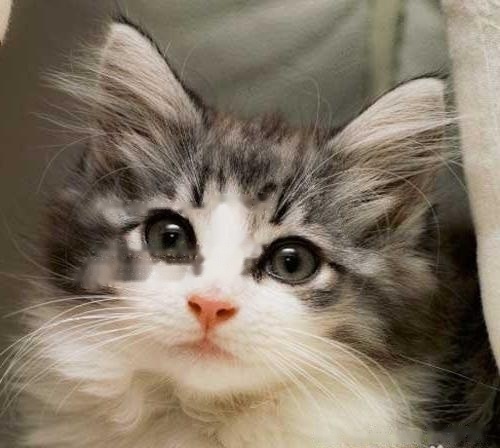When many pet friends want to buy or adopt a cat, they must first observe whether the overall appearance of the cat is defective, whether the mental state and reaction sensitivity are normal, whether there are wounds in the appearance, and whether the fur is not. complete etc. The following editor will show you how to judge the health of Norwegian forest cats and the common sense of kitten feeding.

1. Ears
Cat ears should be clean and free of discharge. If your cat is constantly scratching its ears or shaking its head, it may have been infected with ear scabies.
2. Nose
The cat's nose should feel cool and moist with the back of the hand on the tip of the cat's nose, with no nasal discharge or secretions around the nostrils.
3. Eyes
The eyes should be clear and bright, with no secretions from the corners of the eyes (except Persian and Himalayan cats), and the third eyelid should not be exposed from the corners of the eyes (The third eyelid appears first in many cats.)
4. Anus
It should be clean and free of symptoms of diarrhea, and the surrounding hair should be clean and free of contamination.
5. Abdomen
The cat's abdomen should be slightly rounded, and the ribs should not be touched. If the cat's abdomen is swollen, it may be a roundworm infection or peritonitis symptoms.
6. Hair
The most obvious health indicator of kittens is their hair. A healthy kitten's coat should be shiny, fluffy, and erect. If the kitten's hair is messy and dull, it means that it has been infected with a disease, or has been sick and has just been cured. It is best not to choose such a cat.
1. Diet
From 3-4 weeks old, kittens begin to be interested in the mother cat's food. Give the kitten some finely chopped soft food or dry food that has been milked or blistered. The food can be that of the mother cat, or it can be specially made for the kittens. Once the kitten starts eating solid food, the weaning process begins. Kittens eat more and more solid food gradually and are completely weaned at 7-8 weeks of age. Once a kitten is weaned, it no longer needs milk. With the development of the digestive tract of kittens, the ability to digest lactose gradually weakens, and adult cats cannot digest lactose. If you want to give your kitten milk. Special lactose-free milk should be provided, and fresh drinking water should be provided at all times.
2. Hygiene
First of all, the cat should be trained to defecate in a fixed place. Cats are relatively clean animals, but the habit of fixing the place of defecation requires training to develop. During training, place a waste basin or a cardboard box next to the cat as a toilet, with 3-4 cm thick sand in it, and a little sand smelling of cat urine or feces on the top layer. When you see the cat anxious and moving in circles, it means that the cat wants to defecate or withdraw urine. At this time, lead the cat to the potty and let him smell the sand in the pot first, so that he will defecate in the potty. After that, you can form a habit.
3. Regular disinfection
The cat litter, tableware and bedpan should be cleaned and disinfected regularly, which can not only ensure cleanliness, but also prevent skin disease. All the litter in the cat litter should be replaced frequently, the cat litter should be dried in the sun, and the ultraviolet rays in the sun should be used to achieve the purpose of sterilization and disinfection, so as to prevent the reproduction of microorganisms and the growth of external parasites. Environmental disinfection drugs can be used for regular disinfection. The skin of cats is relatively sensitive, and it is not suitable to use irritating disinfectants. 0.1% peracetic acid spray can be used to disinfect the cat litter and its surrounding environment and utensils.
![[Dog Training 5] The training method of pet dog dining etiquette](/static/img/12192/12192_1.jpg)




